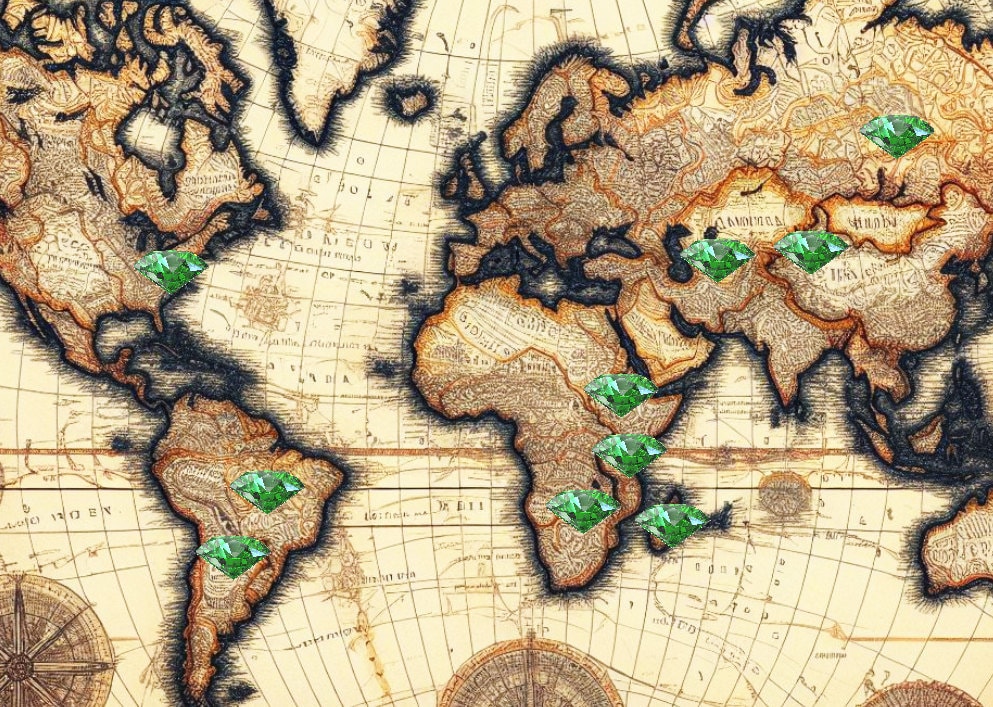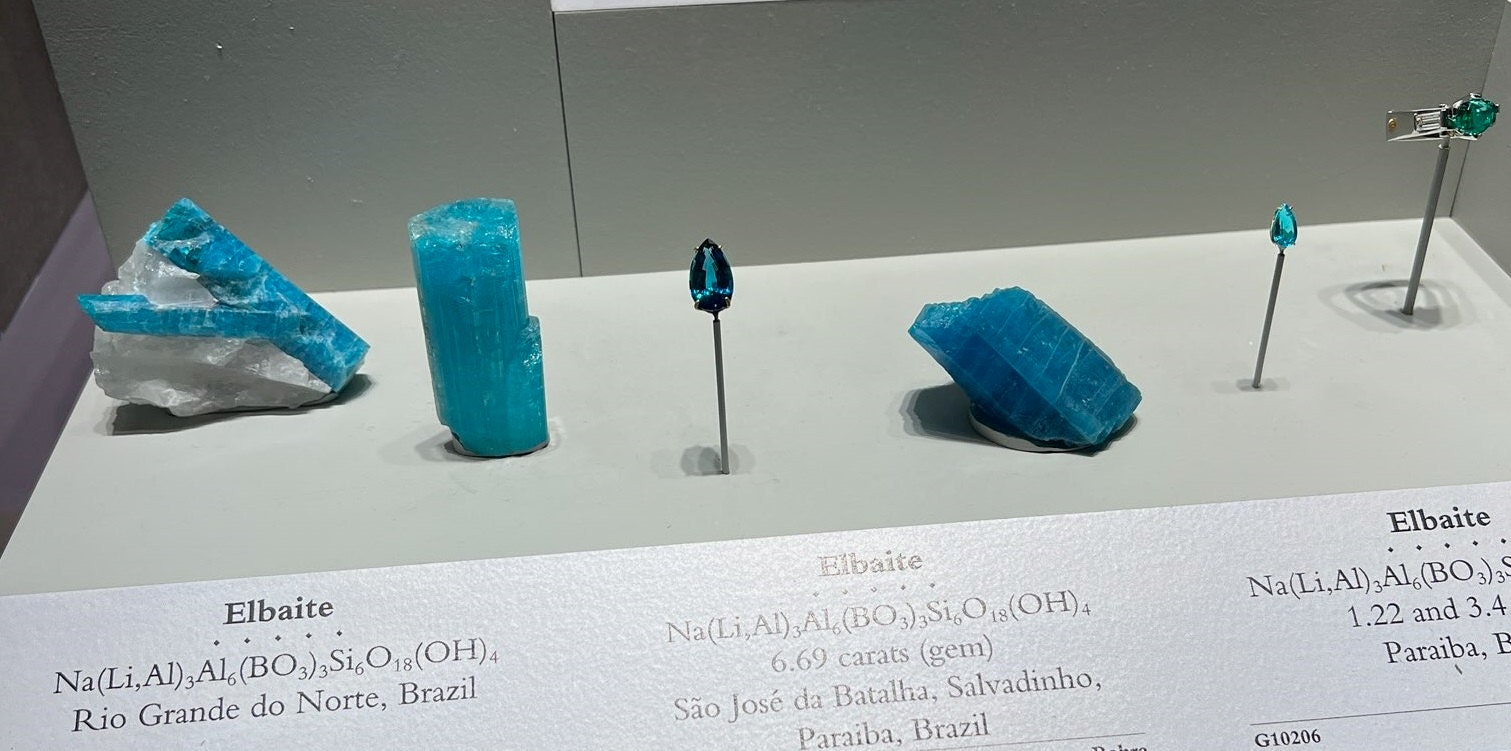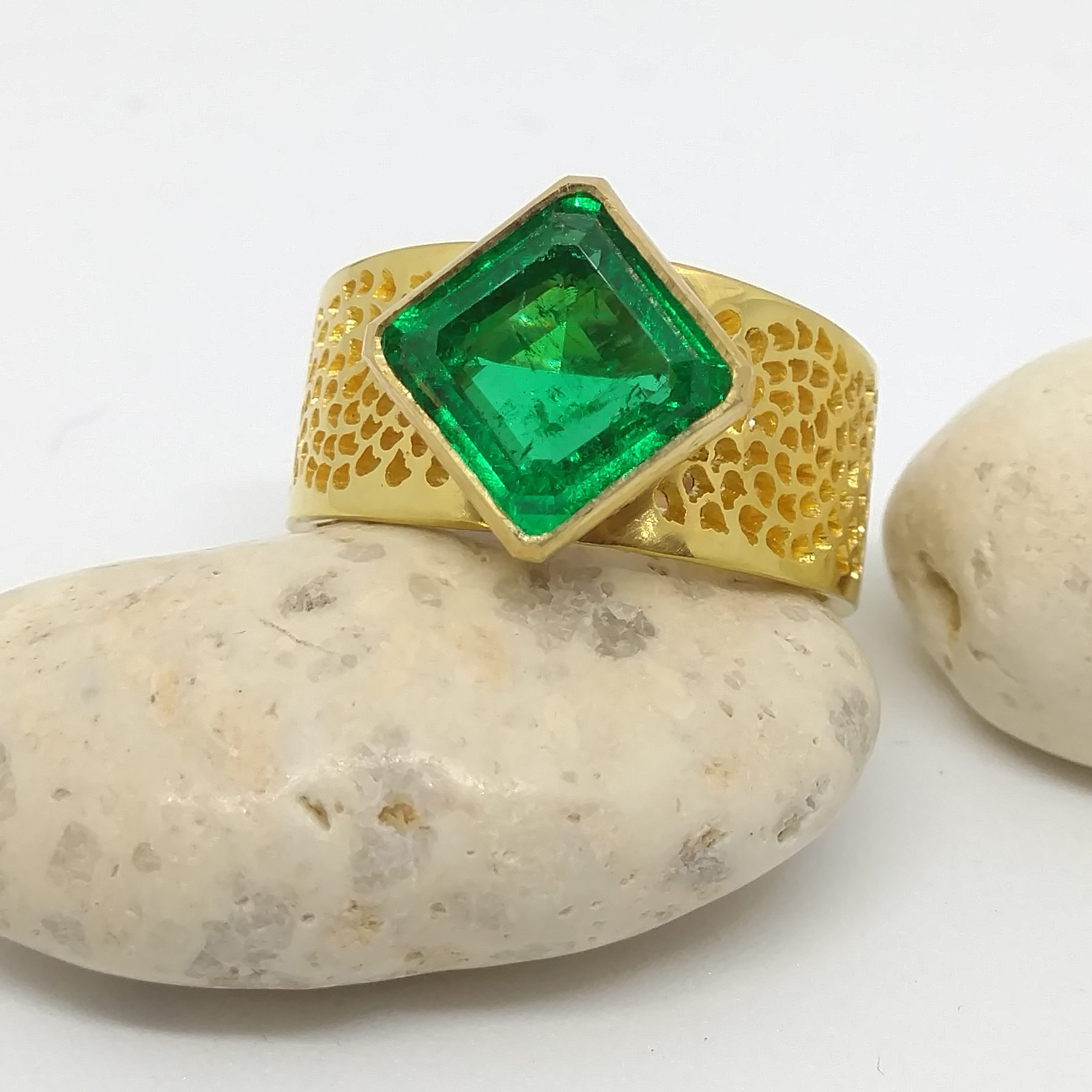How does country of origin affect value in gemstones?
Most of us who’ll read this have heard about the “4 C’s”, used to describe and determine the value of gems: Color, Clarity, Cut and Carat Weight. In reality, there is a fifth C: “Country”. How much does it matter?
The country of origin can significantly affect the value of gemstones. Historically, certain regions are known for gemstones with distinctive characteristics, which can command higher prices in the market by inference alone.
1. Quality and Rarity: Gemstones from specific regions may possess superior quality and rarity due to unique geological conditions. For example, Colombian emeralds are renowned for their intense green color and exceptional clarity, long commanding higher prices compared to emeralds from other regions.
2. Color and Hue: Different regions produce gemstones with distinct colors and hues, which are highly valued by collectors and enthusiasts. For instance, Burmese rubies are prized for their vivid red “Pigeon’s Blood” color , while Kashmir sapphires are renowned for their intense velvety blue hue.
3. Historical Significance: Gemstones from certain regions may have historical significance or a long-standing reputation for quality, which adds to their potential value. Diamonds from the Golconda mines in India are prized due to their historical association with famous diamonds like the Koh-i-Noor and the Hope Diamond.
4. Market Demand: If there's high demand for gemstones from a particular country due to factors like marketing, cultural significance, or fashion trends, their value may increase accordingly. Even one spectacular sale at auction can drive up the prices of similar stones!
5. Ethical and Environmental Factors: Gemstones sourced from countries with responsible mining practices or with stringent regulations regarding labor conditions and environmental impact may be perceived as more desirable in today’s consumer market. An example: Canadian diamonds.
So, how do you make the right decision? The answer is, what do you want from your purchase?
“I want a beautiful stone that I can afford, admire and enjoy.” Then you’re in luck, as the playing field has changed! New sources discovered recently give us many more options for fine gems, making reliance on origin far less important. In many cases, the quality from these newer discoveries equals that from the historically famous source. Let’s use emeralds as an example: Although the finest Colombian emeralds may (arguably) be peerless, origin is not a guarantee of quality! The incredible gems represent the pinnacle of production, sitting atop a mountain of lesser stones, also Colombian; and also for sale! It may be Colombian, but if it’s pale, included and poorly cut, why bother? So use your eyes! Emeralds are now mined in Afghanistan, Brazil, Ethiopia, India, Madagascar, Pakistan, Russia, Tanzania, Zambia, Zimbabwe; and even North Carolina (where you can dig for your own).
Fine stones from many of these sources are stunningly beautiful- they just lack the historical status. So, put your money into beauty everyone can see!
Click here to learn more about emerald quality factors.

“I want to make the best investment.” In this case, quality will still trump origin. If a stone is plain ugly, there won’t be a long line of people willing to hand you top dollar for it no matter where it’s from (or what the dealer promised). You are better off buying a beautiful gem that you will enjoy wearing, and trust that over time it will likely appreciate in value. When it sells, there will be a larger market for the finer stone. In the meantime, you get to enjoy it!
“I am a collector of the unusual and rare.” Origin is very important when a source has dried up and there is very little available on the market. An example is Paraiba tourmaline. This brilliant blue-green gemstone was found the late 1980’s in only three locations: Brazil, Mozambique, and Nigeria. Production has all but stopped, and demand far exceeds the supply. It is now one of the rarest gemstones in the world.
(Check out some prices on 1st Dibs if you’re curious!)
Brazilian stones are the most highly valued, and to my eye, have the most intense color. So to own a stone (even a tiny, included one) with a Brazilian origin report from a reputable gemological laboratory, is a true prize for a gem collector, for which they will gladly pay a premium!

Overall, while the country of origin is an important factor in determining the value of gemstones, it's not the sole determinant. Other factors such as the gemstone's color, size, clarity, cut, and treatments (such as heat or diffusion) also strongly influence its market price. So let common sense guide you when you are shopping for a gemstone: Consider all these factors before making a purchase, and purchase from a dealer whose answers you can trust.
Happy (GEM!) Hunting,
Karen Nottonson, G.G.
HiddenTreasureGems.etsy.com
